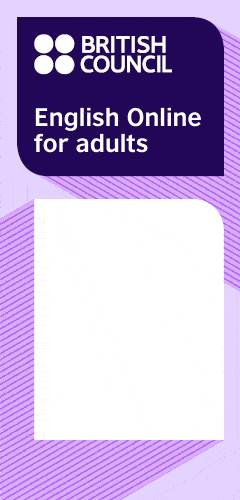The TOEFL, or Test of English as a Foreign Language, is used to measure non-native English speaker’s ability to use and understand the English language. The test is administered by the Educational Testing Service (ETS), and universities and colleges worldwide use it to determine whether or not a student is proficient in English.
The TOEFL test is one of the most popular English proficiency tests globally. Since 2006, the TOEFL iBT (internet-based test) has been the main format of the TOEFL that is accepted by universities. The TOEFL iBT is a computer-based test that measures a student’s ability to use and understand English in a university or college setting. The test consists of four sections: reading, listening, speaking, and writing.
History of the TOEFL test
In 1962, a group of educators from the United States and Canada created the Test of English as a Foreign Language (TOEFL). The test was designed to measure how well non-native English speakers could use the language in an academic setting. The first TOEFL exam took place in 1964.
The current TOEFL iBT test
The standard TOEFL iBT (Internet Based Test) is taken at recognised test centres. Even though the test is internet-based, the exam still has a human examiner and interaction.
In early 2020 ets.org launched a home-based TOEFL iBT test available in most, but not all regions. This home-based test became popular due to restrictions put in place due to Covid-19. This home-based test follows the same format.
The interaction with the examiner takes place via video call. There are some other differences and restrictions that you can read more about on the et.org website. In this article, we will focus on the standard iBT test.
The test measures a student’s ability to use English in an academic setting. It consists of four sections: reading, listening, speaking, and writing, the same as the original paper-based test.

How many sections and how long does the test take?
The test takes 3 hours in total, including a 10-minute break halfway through. It would be best to allow extra time on the test day as you will need to check-in and confirm your identity before the stat starts. The registration usually takes around 30 mins.
Each test section has a time limit that you cannot go over. After the first two sections, you get a 10-minute break.
| Section | Time Limit |
| Reading | 54–72 minutes |
| Listening | 41–57 minutes |
| Break | 10 minutes |
| Speaking | 17 minutes |
| Writing | 50 minutes |
How is the test scored?
For the iBT test, each section has a score of 0 to 30, and An overall score is given out of 120 based on the four sections.
| Section | Score |
| Reading | 0-30 |
| Listening | 0-30 |
| Writing | 0-30 |
| Speaking | 0-30 |
Your score is out of 30 in each section. However, you may notice that not all the sections have 30 questions.
To translate this into 30, you are given a “raw” score determined by the number of questions you answer correctly in each section. The number of questions you answer right is the same as your raw score.
If you answer 40 questions correctly, then your raw score is 40.
This “Raw” Score is then translated into a score out of 30 using a conversion table unique to each test.
Reading and listening sections
The reading and listening section has a set number of questions you must answer in the specified time. These can range from sentence completion to multiple choice. In the reading section only, you can go back and check your answers if you have time. In the listening section, you cannot go back and change an answer once you have submitted a response.

TOEFL Academic reading Section
The TOEFL academic reading test is a timed test where you must read three to four texts and answer ten questions about each text. The passages are about 700 words long.
10 TOEFL Academic Reading Test Question Types
- Vocabulary Question
- Purpose Question
- Reference Question
- Inference Question
- Essential Information Question
- Detail Question
- Negative Factual Information Question
- Summary Question
- Sentence Insertion Question
- Complete the Table Question
The test is designed to measure your ability to read and understand academic texts in English. The texts are from university textbooks and can be about any subject. The questions ask about the passage’s main idea, specific details, inferences, and conclusions.
TOEFL Listening Section
The TOEFL Listening test is designed to measure a student’s ability to understand spoken English in an academic context. The test has three parts: a lecture, questions about the lecture, and a conversation.
In this part of the test, there are 7 question types.
- Detail (understanding specific pieces of factual information)
- Main idea (identifying the primary purpose of a conversation or lecture)
- Inference (recognising implied information)
- Organisation (recognising the relationship between different pieces of information)
- Attitude (inferring the speaker’s attitude or opinion)
- Function (understanding the reason a specific thing is said)
- Categorising (organising ideas from the audio into categories based on their similarities and differences)
Speaking and Writing Sections
The Speaking and writing sections are task-based and graded by an examiner using their experience and set guidelines for awarding scores. The guidelines help ensure that the scores they give are consistent.
This table is an example of the speaking grade framework used by examiners. They use a similar table for the writing section.

TOEFL Speaking Section
The TOEFL Speaking test is designed to assess your ability to communicate effectively in English in an academic environment.
The test consists of 6 tasks given to you by the examiner, which are designed to measure your ability to:
– Give brief responses to questions
– State your opinion on a topic
– Explain your views on a topic
– Describe a situation or experience
– Express agreement or disagreement with a statement
– Summarise and give your opinion on a text
TOEFL Academic Writing Section
The TOEFL Writing test is designed to test your ability to write essays in English. The test lasts for 50 minutes, and you will be given two tasks.
2 Academic Writing Tasks
The topic for the first task is usually quite general, and you will be given a few minutes to plan your essay before you start writing. The topic for the second task is usually more specific, and you will have 30 minutes to write an essay on it.
Integrated writing task (20 minutes) — Read a short passage and listen to a short lecture. Then write about what you read and listened to.
Independent writing task (30 minutes) — You are given a topic to write an essay using your personal experience or opinion.
In both tasks, you will be assessed on your ability to organise your thoughts, express your ideas clearly, and use relevant examples to support your main points.
Scores required for university courses
The TOEFL iBT test is scored on a scale of 0 to 120. Each of the four sections is awarded up to 30 points.
Most UK universities will look for a score of 80 or above for admissions to undergraduate and postgraduate courses. However, each university set its own requirements that can vary between universities and even courses at the same university.
It’s always best to check with your chosen university to help you understand which is the best English language preparation course to join
How to practice for the test for free
Like other SELT (Secure English Language Test) exams, the TOELF test is not easy even for native speakers. Therefore, a critical success factor is being familiar with the test format and question types.
ETS.org provides several free resources to help you prepare for the TOEFL test. These resources include practice tests, tutorials, and sample essays. You can also sign up for a free account on their website to receive more information about the test and tips on preparing for it.
How and where to take the TOEFL test
You need to book an exam date before scheduling your TOEFL test. The test centres often book up quickly, so you should plan ahead to avoid missing out on your preferred date and location.
ETG.Org has a global test centre and exam booking tool you can use to plan and schedule a test.
University offers
Even though the TOEFL test was created in the US for admissions to American universities, it is accepted by most UK universities.
As always, we recommend checking with your chosen university before you apply that they accept the TOEFL iBT test as proof of English language proficiency and the score required.
TOEFL iBT Common Questions

TOEFL iBT is a three-hour computer-based test involving four sections: reading, listening and speaking.
You generally use one primary skill for each section, with some questions or tasks requiring more than one skill- such as listening and writing.
The TOEFL Test is generally considered a difficult exam, even for near-native speakers. However, understanding the test format and question types has a real impact on getting a good score.
The average test score is 81 in the TOEFL exam. It varies between 85 and 95. Any score over 100 is considered a strong TOEFL score.
Most UK universities look for a score of 80 or higher for admissions.
TOEFL Stands for Test of English as a Foreign Language and IBT, stands for Internet-based Test.
TOEFL iBT Home Edition is essentially the same as the TOEFL iBT but with the examiner watching via webcam.
The TOEFL iBT has become increasingly popular due to Covid 19.
- Understand how the test is structured and scored
- Practice the test and the question types until you know them like the back of your hand.
- Take a course especially to prepare for the test.
- Listen, read and speak as much English as possible in your spare time.
The iBT and PBT are two different test formats of the TOEFL test.
iBT= Internet-Based Test
PBT= Paper-Based Test
TOEFL iBT is the main, most popular and widely accepted TOELF test.
TOEFL essentials is a new test format that is shorter with instant results. However, it is not as widely accepted so check first with your chosen university before booking.
Each of the four sections, Reading, Listening, Writing and Speaking, are given a score out of 30. These make up an overall score out of 120.
There are 4 speaking tasks in the test- One “independent speaking task” and, Three “integrated speaking tasks”.
The Speaking section last 17 minutes.
There is no pass or fail score on the test. However, most UK universities look for a score above 80 for admissions to graduate courses.
The TOEFL iBT is the most widely accepted TOEFL test version by UK universities.
Both are standardised tests designed to give an accurate reflection of English language proficiency. As such, both tests are sufficiently difficult to be a challenge even for advanced level English speakers.
On the day of the test, you need to take with you the following
- valid, acceptable identification (ID)
- a printout of your order confirmation email (for the Paper Edition test only)
You are not allowed to take your phone or any other electronic devices into the test room with you.
To book and take a TOEFL iBT test you need to register with ets.org. Once you have registered you can select the date and location for your test.
